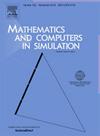Mitigating negative effects of EBHSV-infected eastern cottontail invasion in Italy using Z-type control on a four-population system
IF 4.4
2区 数学
Q1 COMPUTER SCIENCE, INTERDISCIPLINARY APPLICATIONS
引用次数: 0
Abstract
The introduction in Italy of eastern cottontails (Sylvilagus floridanus) for hunting purposes has influenced the local predator–prey dynamics of the red foxes (Vulpes vulpes) and native European hares (Lepus europaeus). Although no direct competition seems to occur between the two lagomorphs, the cottontail invasion damages the indigenous hare population. Indeed, the invasive lagomorphs cause hyperpredation of red foxes on native hares and are also carriers of viruses and parasites. This paper focuses on the situation in which EBHSV-infected eastern cottontails are introduced in a region of virus-free European hares. To avoid the extinction of native lagomorphs and to contain the invasive ones, we look at two possible biological control actions using the Z-type control method on a four-population reference system. In particular, we consider an indirect control of the invasive prey acting on predators and a combination of this indirect control with direct control on native prey. The corresponding Z-controlled models are investigated analytically and numerically. In both cases, the Z-type control significantly reduces the number of equilibria and the convergence of the cottontail population to the desired state is ensured. The hare survival, instead, is guaranteed only in the second case. Overall, mathematically speaking, the second Z-type control action seems the best solution. However, in the cases in which the indirect control on cottontails allows the native prey survival, this control may be preferable since it involves only one control function and seems more practicable. In any case, in the choice of control action, ecosystem managers need to consider each specific situation, taking into account various elements from a biological and practical point of view.
利用四种群系统的z型控制减轻意大利东部棉尾入侵感染ebhv的负面影响
为了狩猎目的而引入意大利的东部棉尾(Sylvilagus floridanus)已经影响了当地红狐(Vulpes Vulpes)和本地欧洲野兔(Lepus europaeus)的捕食者-猎物动态。虽然这两种袋狸之间似乎没有直接的竞争,但棉尾兔的入侵损害了土着野兔的种群。事实上,入侵的狐猴引起了红狐对本地野兔的过度捕食,同时也是病毒和寄生虫的携带者。本文主要介绍了感染ebhsv的东部棉尾在无病毒的欧洲野兔地区引入的情况。为了避免本土狐猴的灭绝和遏制入侵狐猴,我们在4种群参考系统上采用z型控制方法研究了两种可能的生物控制措施。特别是,我们考虑了对入侵猎物作用于捕食者的间接控制,以及这种间接控制与对本地猎物的直接控制的结合。对相应的z控制模型进行了分析和数值研究。在这两种情况下,z型控制显著减少了均衡的数量,保证了棉尾种群收敛到理想状态。相反,野兔的生存只有在第二种情况下才有保证。总的来说,从数学角度来说,第二个z型控制动作似乎是最好的解决方案。然而,在对棉尾虫进行间接控制可以使本地猎物存活的情况下,这种控制可能是可取的,因为它只涉及一种控制功能,似乎更可行。无论如何,在选择控制行动时,生态系统管理者需要考虑到每一种具体情况,从生物学和实际的角度考虑到各种因素。
本文章由计算机程序翻译,如有差异,请以英文原文为准。
求助全文
约1分钟内获得全文
求助全文
来源期刊

Mathematics and Computers in Simulation
数学-计算机:跨学科应用
CiteScore
8.90
自引率
4.30%
发文量
335
审稿时长
54 days
期刊介绍:
The aim of the journal is to provide an international forum for the dissemination of up-to-date information in the fields of the mathematics and computers, in particular (but not exclusively) as they apply to the dynamics of systems, their simulation and scientific computation in general. Published material ranges from short, concise research papers to more general tutorial articles.
Mathematics and Computers in Simulation, published monthly, is the official organ of IMACS, the International Association for Mathematics and Computers in Simulation (Formerly AICA). This Association, founded in 1955 and legally incorporated in 1956 is a member of FIACC (the Five International Associations Coordinating Committee), together with IFIP, IFAV, IFORS and IMEKO.
Topics covered by the journal include mathematical tools in:
•The foundations of systems modelling
•Numerical analysis and the development of algorithms for simulation
They also include considerations about computer hardware for simulation and about special software and compilers.
The journal also publishes articles concerned with specific applications of modelling and simulation in science and engineering, with relevant applied mathematics, the general philosophy of systems simulation, and their impact on disciplinary and interdisciplinary research.
The journal includes a Book Review section -- and a "News on IMACS" section that contains a Calendar of future Conferences/Events and other information about the Association.
 求助内容:
求助内容: 应助结果提醒方式:
应助结果提醒方式:


